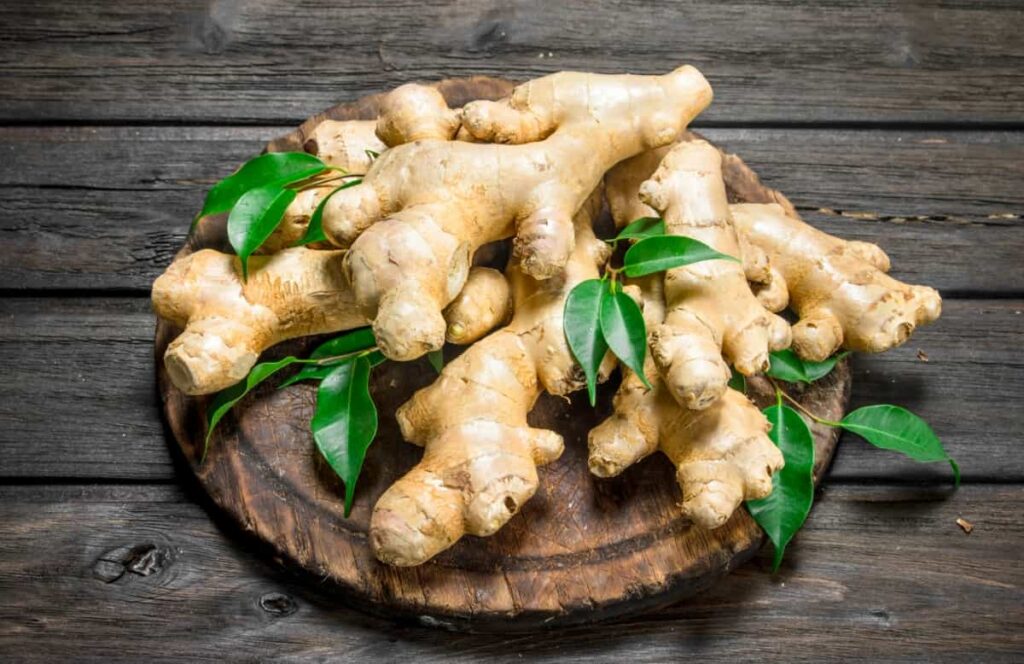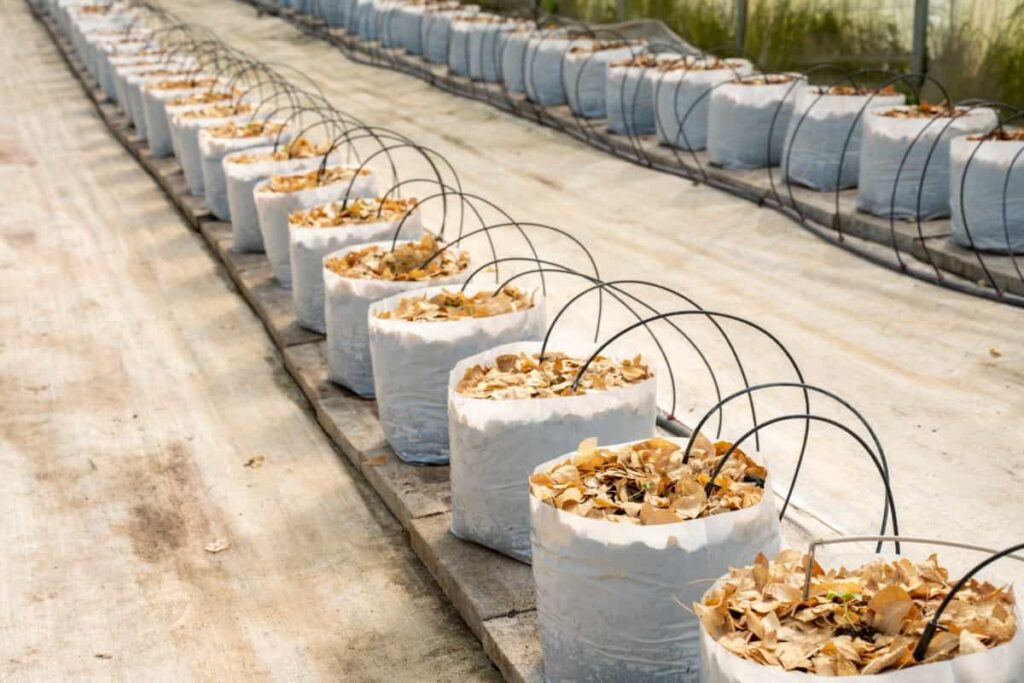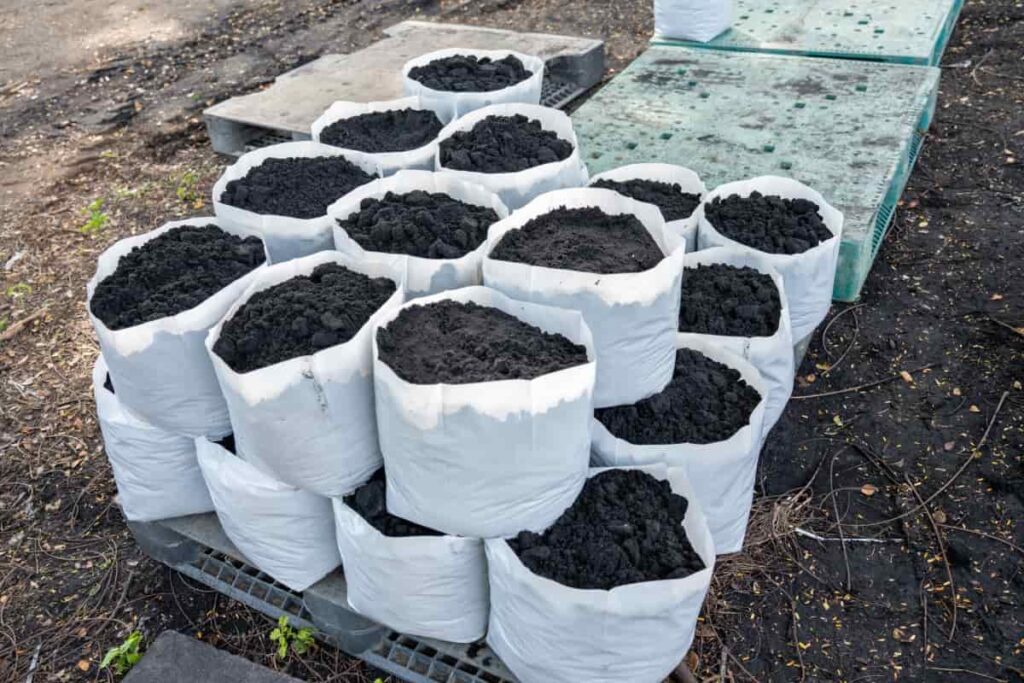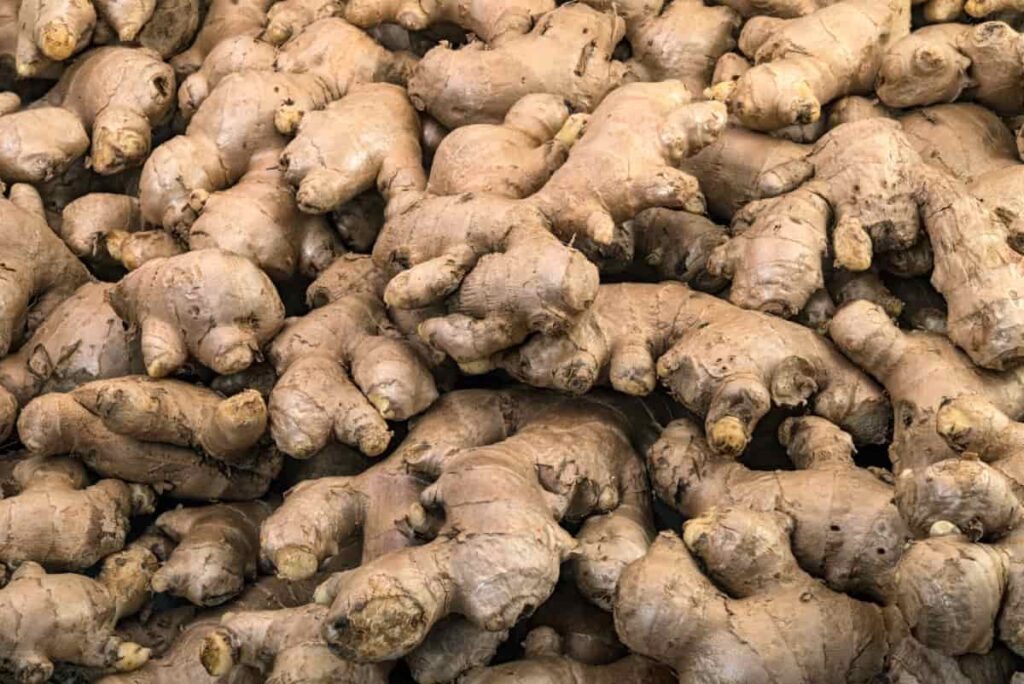Ginger is a versatile spice and medicinal herb that can be easily grown in containers like grow bags. Growing ginger in grow bags offers several advantages, including space efficiency, portability, and better control over soil conditions. This guide will walk you through the process of successfully cultivating ginger in grow bags.
Why Grow Ginger in Grow Bags?
- Limited Space: Grow bags are perfect for urban gardening or areas with limited space, allowing individuals to cultivate ginger even without a garden.
- Portability: Grow bags can be moved around easily to optimize sunlight exposure and environmental conditions.
- Soil Control: Grow bags offer better control over soil quality, which is crucial for ginger cultivation.
- Root Aeration: The fabric material of grow bags promotes air pruning, preventing root circling and encouraging healthier root growth.
Choosing Ginger Varieties Suitable for Bags
- Varieties: Consider selecting ginger varieties that are well-suited for container cultivation, such as Zingiber officinale or “Jamaican” ginger.
- Disease Resistance: Opt for disease-resistant ginger varieties to mitigate potential issues during cultivation.

Planting Ginger in Grow Bags
Selecting the Best Grow Bags
Determining the Ideal Size and Material for Ginger
Selecting the best grow bags for ginger involves considering size and material. For grow bag gardening for ginger, opt for bags with at least 5 gallons of capacity to accommodate ginger’s root system. Fabric grow bags are preferred for their excellent aeration and drainage properties, promoting healthy root development. Ensure the material is durable and provides sufficient support for the growing plants.
Benefits of Using Fabric Grow Bags for Ginger
- Aeration: Fabric grow bags allow air to penetrate the soil, promoting root health and preventing waterlogging.
- Drainage: The porous nature of fabric grow bags facilitates drainage, reducing the risk of root rot.
- Temperature Regulation: Fabric grow bags help regulate soil temperature, preventing overheating during hot weather.
Preparing the Perfect Soil Mix
Best Soil for Ginger Grow Bags
- Well-Draining: Use a well-draining soil mix to prevent waterlogging, which can lead to root rot.
- Rich in Organic Matter: Incorporate compost or aged manure to enrich the soil with vital nutrients.
- pH Level: Aim for a pH range of 6.0 to 7.0 for optimal ginger growth.
Adjusting pH and Ensuring Proper Drainage
- pH Testing: Test the pH level of the soil mix using a soil testing kit and adjust it accordingly using amendments like lime or sulfur.
- Adding Drainage Materials: Mix perlite or coarse sand into the soil mix to improve drainage and aeration.
Planting Ginger Rhizomes in Bags
Selecting Healthy Rhizomes for Planting
Choose ginger rhizomes that are firm, plump, and free from signs of decay or damage. Look for well-developed buds or “eyes” on the rhizomes, indicating potential growth.
Step-By-Step Planting Process in Grow Bags
- Fill the grow bags with the soil mix, leaving a few inches of space at the top.
- Fill grow bags with a well-draining soil mix, leaving enough space for rhizome placement.
- Soak ginger rhizomes overnight to encourage sprouting and enhance planting success.
- Place rhizomes horizontally in the soil, ensuring buds face upwards and are covered with a thin layer of soil.
- Plant rhizomes 6-8 inches apart in the grow bags to allow room for growth.
- Water the newly planted rhizomes thoroughly to settle the soil and initiate growth.
Watering and Moisture Management
Establishing a Watering Routine for Optimal Growth
Consistent Watering ginger in fabric bags is essential. Water deeply when the top soil is dry, ensuring thorough saturation. During the growing season, typically spring and summer, water ginger plants regularly, aiming to keep the soil consistently moist but not waterlogged. Adjust watering with respect to temperature and humidity to maintain optimal moisture levels.
Balancing Moisture to Prevent Root Rot
Proper drainage is critical to preventing root rot in ginger plants. Ensure grow bags have sufficient drainage holes and use a well-draining soil mix. Avoid overwatering to avoid water stagnation and root rot. Monitor soil moisture levels closely and adjust watering practices accordingly to maintain a balance between hydration and aeration for healthy root development.
In case you missed it: Ginger Farming Information Guide

Nutrient and Fertilization Needs
Essential Nutrients for Ginger Growth
Ginger plants require a balanced supply of essential nutrients for optimal growth and development. For fertilizing ginger in grow bags, the ideal NPK (Nitrogen, Phosphorus, Potassium) ratio for ginger cultivation in grow bags is approximately 6-8-6. Nutrient needs for ginger in grow bags include Nitrogen promotes lush foliage growth; phosphorus supports root development and flowering; and potassium enhances overall plant vigor and disease resistance.
Organic Fertilization Techniques for Ginger in Grow Bags
For organic ginger cultivation in bags, utilize well-aged compost to enrich the soil and provide a steady supply of nutrients. Additionally, apply organic fertilizers such as fish emulsion or seaweed extract every 4-6 weeks during the growing season to supplement soil fertility. These organic fertilization techniques promote soil health, improve nutrient uptake, and support robust ginger plant growth without the use of synthetic chemicals.
Sunlight and Temperature Requirements
Sunlight Requirements for Ginger in Bags
- Placement: Proper sunlight exposure and temperature management are essential for ginger plants to thrive. Place grow bags in a location that receives partial to full sunlight, preferably receiving 6 to 8 hours of sunlight daily.
- Sunlight Exposure: Rotate grow bags periodically to ensure even sunlight exposure for all sides of the plants.
Managing Temperature for Healthy Ginger Growth
- Optimal Temperature Range: The optimal temperature range for growing ginger in bags is between 24 °C and 29°C during the day and slightly lower temperatures at night.
- Protection from Extreme Conditions: Provide shade during hot summer afternoons and protect plants from frost during colder months.
In case you missed it: How to Grow Ginger Organically in Gujarat: Cultivation Practices and Production Management

Caring for Your Ginger Plants
Routine Care and Maintenance Tips
- Regularly remove weeds around ginger plants to prevent competition for nutrients and moisture, maintaining a clean growing environment.
- Apply an organic mulch around ginger plants to retain moisture, prevent weed seed germination, and regulate soil temperature, promoting healthy growth.
- Trim yellowing or dead foliage to encourage airflow and prevent disease. Pruning also redirects energy to healthy growth, ensuring vigorous ginger plants.
- Check soil moisture regularly and water ginger plants as needed to maintain consistent moisture levels, avoiding both drought stress and waterlogging.
Identifying and Managing Pests and Diseases
In ginger cultivation in grow bags, watch for pests like aphids, spider mites, and ginger root nematodes. Employ organic controls like neem oil or insecticidal soap. Practice good sanitation and crop rotation to prevent diseases such as rhizome rot and fungal infections. Ensure proper airflow to reduce humidity and fungal growth. Promptly remove any infected or diseased plants to prevent spread. Monitor plants regularly for signs of pest infestation or disease development and take immediate action to mitigate issues before they escalate.
Harvesting Your Ginger: Ginger Root Harvest and Care in Bags
Knowing when Your Ginger is Ready to Harvest
Monitor your ginger plants for signs of maturity, typically 8-10 months after planting. Look for yellowing and dying foliage, which indicates that the rhizomes are fully mature and ready for harvest.
How to Harvest Ginger without Damaging the Plant: Storing and Curing Ginger from Grow Bags
- Loosening Soil: Use a trowel or fork to loosen the soil gently around the plant’s base, being careful not to damage the rhizomes.
- Careful Extraction: Gradually lift the ginger rhizomes from the soil, ensuring minimal disturbance to the plant’s roots.
- Rinse and Store: After harvest, rinse the rhizomes and allow them to dry prior to storing them in a cool and dry place. This method preserves the ginger’s flavor and quality for later use.
In case you missed it: Ginger Farming Business Plan: A Comprehensive Guide for Successful Profitable Cultivation and Harvesting

Conclusion
Cultivating ginger in grow bags is a rewarding endeavor that offers numerous benefits, from space efficiency to better control over soil conditions. By following the steps outlined in this guide, you can successfully grow healthy ginger plants and enjoy a bountiful harvest.
- Profitable Village Farming Business Ideas in 2024
- High-Yield Aquaculture: Fast-Growing Fish for Farming
- Effective Fish Pond Construction Techniques for Beginners
- Irrigation and Water Management in Pineapple Farming
- Blossom to Harvest: Mastering Flowering and Pollination in Papaya Farming
- Pig Fattening Essentials: From Selection to Sale for Beginners
- Raising Wagyu Cattle: A Complete Guide for Premium Beef Production
- Soil Types and Their Water Holding Capacity
- Optimizing Irrigation Schedules for Coconut Groves for Enhanced Yield
